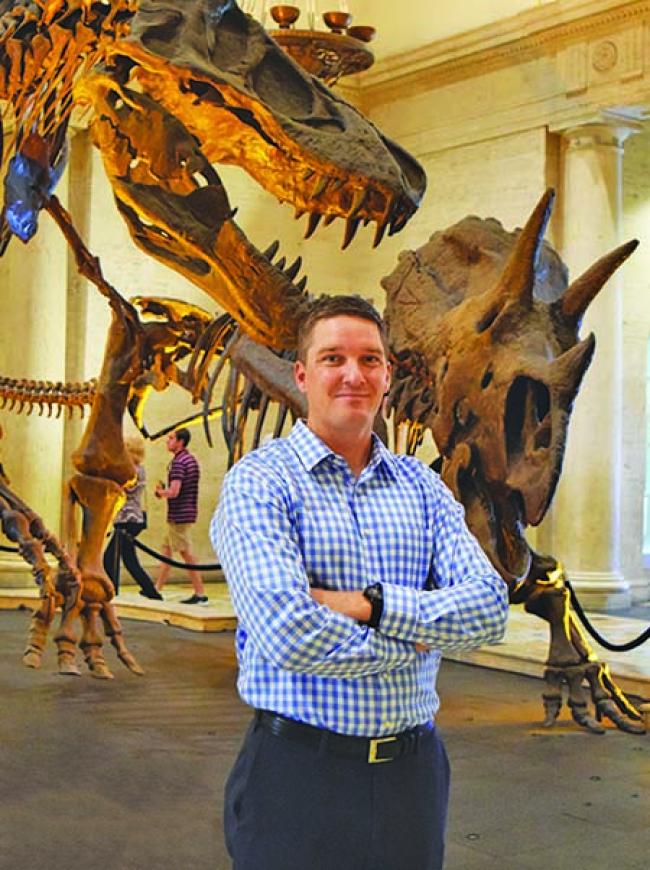Early Dinosaur Evolution: from the Paleo-Equator to the Pole
Wednesday, November 20, 2024 @ 1 pm in CSL 422
watch Nate’s talk

Abstract
The Late Triassic witnessed the origin of modern vertebrate groups and a major mass extinction, yet the early diversification of dinosaurs remains one of the most poorly known events of vertebrate evolution. Renewed interest in dinosaur origins has challenged classical hypotheses of rapid transition to dinosaur-dominated faunas in the Late Triassic, and assumptions of cosmopolitan biogeographic patterns in early Mesozoic tetrapods. The Hayden Quarry at Ghost Ranch, New Mexico has contributed significantly to these questions, yielding >30,000 Late Triassic fossils since 2006, including discovery of non-dinosauriform dinosauromorphs such as Dromomeron romeri which established that a dinosaur “precursors” were diverse and contemporaries of early dinosaurs. Hayden Quarry dinosaurs have shown that many features unique to the avian body plan were in place early in dinosaur evolution, and that the perplexing dichotomous pattern of herbivorous sauropodomorph diversity at high- vs. low latitudes may have been driven by climate and plant community instability in tropical latitudes during the Late Triassic. Similarly, research on dinosaurs from the Early Jurassic Hanson Formation of Antarctica has revised our understanding of early dinosaur evolution. The saurischians Cryolophosaurus and Glacialisaurus fill major gaps in early dinosaur phylogeny, and established the paraphyly of Coelophysoidea and Prosauropoda, two major groups that span the End Triassic mass extinction event. New species of Antarctic sauropodomorphs support prevalent dispersal across Pangea during the early Mesozoic, and provide novel opportunities for testing biogeographic hypotheses. Field projects in Ghost Ranch and Antarctica also provide unique opportunities for mentoring future geoscientists, and for broadening public understanding of paleontology through impactful museum exhibits and programming.
Speaker Bio
Dr. Nathan Smith supervises the Dinosaur Institute staff and conducts research on dinosaur evolution. He holds a B.A. from Augustana College, M.S. from the University of Iowa, and Ph.D. from the University of Chicago, and was a professor at Howard University before joining the Natural History Museum of LA County in 2015. Fieldwork has taken Nate to Antarctica, Argentina, China, and the western USA. His research is funded by the National Science Foundation, and focuses on the evolution of Triassic–Jurassic dinosaurs and the use of comparative methods in paleontology. The origin and diversification of dinosaurs represents one of the most poorly known events of vertebrate evolution, and Nate’s work in Ghost Ranch, New Mexico and Antarctica has filled major gaps in our understanding of early dinosaurs and their world. His Antarctic field program is featured in the 3-D IMAX® movie, “Dinosaurs of Antarctica”, and he co-curated the traveling exhibit “Antarctic Dinosaurs”.

